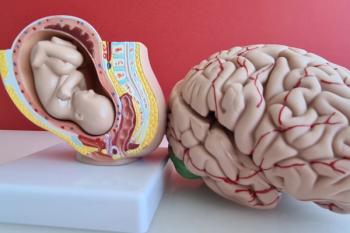
New safeguards combat chemo vial contamination
Current safe-handling procedures for vials containing chemotherapy products are apparently insufficient. Recent U.S. and European tests have determined that product residues adhering to the outside of chemotherapy vials are a pharmacy hazard.
Current safe-handling procedures for vials containing chemotherapy products are apparently insufficient. Recent U.S. and European tests have determined that product residues adhering to the outside of chemotherapy vials are a pharmacy hazard.
"I'm surprised people are not screaming about this," said James Jorgenson, director of pharmacy services at the University of Utah Hospitals & Clinics. Jorgenson had his own epiphany after testing three pharmacy techs working in a new IV admix facility. Two techs prepared chemotherapy and a third handled pharmacy paperwork but did not manipulate product.
Test results were a shock, Jorgenson told attendees at the ASHP Summer Meeting in Boston. Urinalysis showed detectable chemotherapy residues in the two techs who prepared the doses, despite the use of isolation cabinets and PhaSeal isolation units. The third tech, who never entered the preparation area, showed significantly higher contamination. "She unpacked chemo orders as they came from the wholesaler and did not wear gloves," Jorgensen told Drug Topics. "No one knew the exterior of the vials and the packing they were shipped in were all contaminated."
Jorgenson has led in efforts to reduce contamination linked to preparing and administering chemotherapy. So has Luci Power, senior pharmacy manager for Parenteral Support Services at the University of California San Francisco Medical Center. She was part of an advisory committee that drafted a 2004 alert on the hazards of chemotherapy and other drug products from NIOSH, the National Institute for Occupational Safety & Health. "Surface contamination of vials has probably always been a problem," she said. "It turns out that manufacturers do not decontaminate individual vials. Until they do, the burden is on pharmacy."
Power noted that drugmakers are not required to decontaminate drug vials. "Put the blame squarely on USP [U.S. Pharmacopeia] and FDA [Food & Drug Administration]," Power said. "Manufacturers are doing what is supposed to be done, but those surface contamination issues have never been addressed."
That's no surprise, Jorgenson added. FDA is responsible for patient safety and product efficacy. USP guidelines deal with product composition and sterility. Neither body is responsible for the safety of healthcare workers.
"Organizations like OSHA [Occupational Safety & Health Administration] have to step in and promulgate appropriate safety regulations," Jorgenson claimed. "Nobody except OSHA looks to the safety of the people who work with these products." OSHA should eventually produce regulations on workplace hazards presented by pharmaceutical products based on the 2004 NIOSH alert, Jorgenson added. Until then, pharmacies must act on their own, he said.
At Utah, chemotherapy products are moved directly from the loading dock to sequestered facilities. Vials are decontaminated as soon as possible after receipt. All pharmacy personnel who handle chemo packaging or vials wear gloves and gowns. Discarded protective equipment, packaging materials, and decontamination runoff are treated as hazardous waste.
"That is already the standard of practice in Belgium," Jorgenson said. "In UK hospitals, pharmacy uses two isolators, one to decontaminate vials as they come in, the other to manipulate product. We already know how to eliminate almost all contamination from what is inside those vials. Now we have to learn how to eliminate contamination on the surface."
The recently published survey reported that a European drugmaker has decided to apply TevaGuard (Teva Pharmaceuticals, Ltd.), a plastic base and sleeve, to vials in order to trap any remaining surface residues. At least one U.S. major manufacturer, Bristol-Myers Squibb, is reportedly looking into the issue.
Generic maker Mayne Pharma is already adding a plastic base and sleeve called Onco-Tain to some of its glass chemo vials. Individual chemo vials are given a final wash after filling and capping, then wrapped in heat-shrink plastic to trap any remaining surface residue.
"Surface contamination has been an issue in Australia since the 1980s," said Mayne Pharma USA product manager Joanna Dall. Onco-Tain was introduced in Australia in 1992.
Newsletter
Pharmacy practice is always changing. Stay ahead of the curve with the Drug Topics newsletter and get the latest drug information, industry trends, and patient care tips.





















































































































































